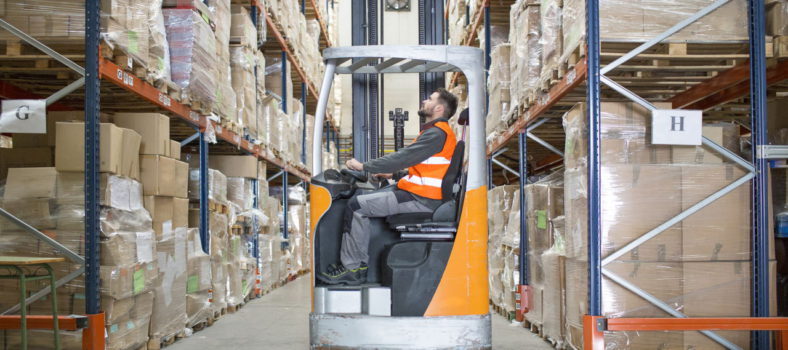Canadian retailers stepping up to disruption, but feeling the pressure
TORONTO–Widespread disruption from technology, shifting consumer behaviours and preferences across demographic groups, and changing economic impact continue to radically transform retail in Canada, says KPMG’s Willy Kruh, Consumer and Retail National Leader, High Growth Markets, KPMG in Canada and Global Chair for Consumer Markets.
“Technological disruption has fundamentally changed the retail experience, but many Canadian retailers are still playing catch up,” says Kruh. “Retailers today not only have to compete with fierce e-commerce competitors, including large global platform companies, but also respond to rapidly shifting shopping expectations driven by new technologies and demographic changes. Recognition is only half-way to doing something, and too many Canadian retailers are not keeping pace with the fact that consumers and their shopping habits are undergoing a sea-change.”
E-commerce adoption on the rise
KPMG’s forthcoming Me, My Life, My Wallet report, an extensive multi-dimensional study of consumers in the digital era, shows that an increasing number of Canadian shoppers are turning to online channels, led by the fast-growing Gen Y and Z demographics. While e-commerce adoption in Canada lags other developed countries, Canadians’ buying habits are evolving and they are gradually migrating online, driven by the growing need for convenience and personalization.
Kruh explains, “Traditional retailers are facing an urgent choice: be relevant or go out of business as pressure mounts in the face of innovative online, omni-channel and specialty competitors. Canadian retailers who fail to respond to this rapidly changing environment are likely to face dire choices, including store closures.”
E-commerce share of retail sales in Canada is expected to grow year-over-year, but is still less than 10 per cent of overall retail. An increasing number of retailers are responding by using technology to improve the customer experience either through innovative in-store experiences, artificial intelligence, online channels, loyalty programs or tech-enabled touch points. However Canadian consumers are slower to adopt digital commerce than their counterparts in the U.S., the UK and Europe.
Rise of Generation Y
Millennials will soon be the world’s largest single demographic grouping and they are already the largest generation in the Canadian workforce. Close to four in 10 Millennials live with their parents, and these parents are closer to their kids than any generation before. The merging of these two huge cohorts is reshaping retailing in Canada.
“Millennials tend to be very tech savvy and that is rubbing off on their Boomer parents,” says Kruh. “This is accelerating the shift to online and experience-based shopping, but still too many Canadian retailers are stuck in a Boomer mentality.”
Big data needs a big re-think
Data has transformed the consumer and retail sector as sophisticated analytics and an openness to big data can help organizations with their digital transformation strategies. Analytics can give fresh insight into everything from store location to product selection and, crucially, the cost to serve a customer.
However, according to our upcoming Me, My Life, My Wallet report, Canadian consumers are among the least trusting in the world with their personal data. More than 30 per cent of Canadians surveyed would not trade their data for anything; 54 per cent are anxious about identity theft; 46 per cent are concerned about the unauthorized tracking of their online habits; and 63 per cent do not trust behaviourally-tracked ads. Tellingly, only 6 per cent of Canadian consumers trust retailers with their data, among the lowest ranked industries.
“Companies must begin to appreciate that the modern customer is highly aware of the worst ways in which their data can be misused,” notes Kruh. “From hacking to unwarranted tracked advertising, customer are rightly worried. Transparency and better communication will go a long way to reassuring customers that their data is in safe hands and that it is being used in their benefit.”
He adds: “Every business needs to think hard about how to use data responsibly to build deeper insights and relationships with their customers. And they have to know that if they don’t, their competitors will.”
The case for brick-and-mortar
The majority (71 per cent) of Canadian consumers surveyed in the Me, My Life, My Wallet study believed that brick-and-mortar stores will not disappear. Half of consumers surveyed in Canada across four demographic groups do a mix of online and brick-and-mortar shopping, and most still have a positive view of traditional malls and grocery stores, in particular. Food, clothing and household goods, for example, were noted as items that consumers prefer to purchase in-store, as well as those purchased most frequently.
“Many retailers will have to right-size their portfolio of stores, but they are also planning new business models or re-evaluating the in-store experience to offer hybrid experiences for customers,” adds Kruh. “Retailers must have a clear understanding of where and how they’re investing so they can fully benefit from the connected-customer approach. Only then will they be able to deliver what consumers want.”
A number of companies that started solely online are now beginning to introduce physical “showrooms” to offer virtual-physical experiences for customers. For instance, some players in the grocery space are eyeing even more locations in the years to come. Indeed, retail companies are developing new business models, or rethink existing ones, in direct responses to the “new normal” in the shopping world.
“Amid disruption from the Amazons of the world, retailers should focus on creating value and innovating on the links between online and physical shopping,” says Kruh. “Every business needs to think hard about how to cater to what customers find relevant and enhance their overall experience. Today, consumers are most keen on digital experiences that improve and complement the physical environment around them.”
Lured by discounts
Brands are also increasingly treating social media as a sales platform, a move that reflects the growing importance of social media in e-commerce. Yet a sizeable segment (42 per cent) of Canadian consumers surveyed by KPMG do not find a brand’s social media presence important, higher than their global counterparts (29 per cent) surveyed in the same study. If they were to engage with a brand on social media, however, about half (48 per cent) of Canadians surveyed said they would respond positively if they were offered a deal or discounts.
“One of the biggest Canadian shopper segment is Generation Y parents looking to stretch the family budget. The most likely route to persuading them to hand over their personal data is to offer deals and better experience in exchange,” says Kruh.
KPMG conducted an extensive, global study which included a survey of almost 25,000 consumers in the UK, US, Brazil, UAE, France, Canada, China and India. Further context was provided by an in-depth ethnographic interviews with consumers on the ground in these same eight countries. *A supplementary global survey of 4,900 consumers was conducted following the initial Global KPMG study.




